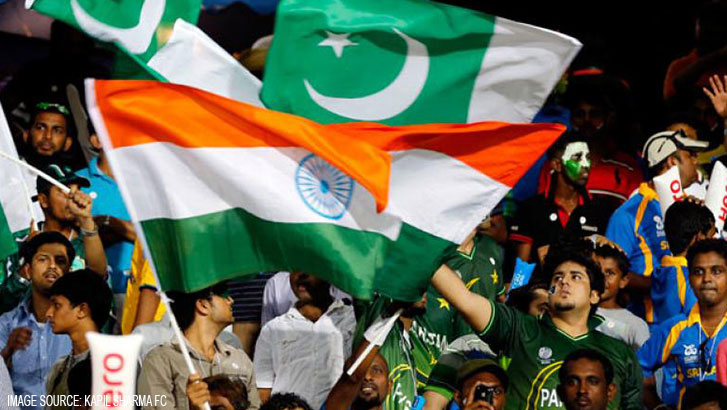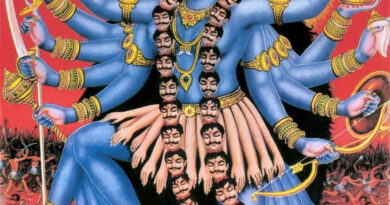All’s nearly well that ends well
ALL’S well that ends well. It was like a war averted between nuclear neighbors. How much poisonous hysteria can a game of cricket generate, led by folks who revel in a steady dose of TV-induced cretinism that passes for nationalism?
Pakistan won a coveted championship with ferocity and brilliance, and, in the process, their cricket captain answered his critics at home. The Indian team redeemed itself with welcome sportsmanship, a relief from the sullen culture dominant in their country of late.
Virat Kohli’s spontaneous praise for Pakistan’s victory was gracious and fulsome. Earlier, M.S. Dhoni rolled out the spirit of the encounter with the team that is sadly denied regular matches with India thanks largely to a disingenuous cussedness stalking Delhi. His cradling of the baby boy of Pakistan skipper Sarfraz Ahmed was a heart-warming picture of hope for cricket.
Fire rituals at temples and feverish prayers in mosques have become a new feature of an India-Pakistan match. The image of the conch shell-blowing Indian with his sacramental hairdo, the Indian flag painted across his face, has become a counterpoint to Pakistan’s interpretation of what a Muslim cheerleader should look like, with a mandatory beard and matching vocal chords. It imbues the sport with an eerie atavism. This kind of thing is peculiarly sub-Saharan in its social texture with little resemblance to any advanced cricket-playing culture.
Or, has the beer-driven loutishness of English soccer fans found a companion in the faith-driven hysteria of many Indians and Pakistanis?
One more point on religion in sports: these days you would find a fair sprinkling of Muslim players in every team, but in India, their presence has shrunk. Why? Either there aren’t good enough cricketers left in the community, unlike when almost half the team could be made up with them without it being noticed. Or India’s secular veneer is peeling off.
Which sometimes makes me wonder what the team’s composition would be had the Indian subcontinent not been split into three mutually insecure nations. Pakistan had an all-Muslim team on this outing, which is more or less its normal fare barring rare exceptions. India with a solitary Muslim player sitting it out was unusual. This is not to argue for a religious quota in sports, not at all. The question is: have all the good players migrated to Pakistan, Bangladesh, England, New Zealand, South Africa and even Australia, and deserted India?
When South Africa had an all-white cricket team, they were rapped on the knuckles. When Kenya had an all-Sikh hockey team, everyone applauded. The intent was important, not the composition.
My ringside experience of India-Pakistan fixtures is limited to a solitary match in Kanpur in the 1960s, and a few pajama versions of the sport in Sharjah. There was humor and fun always, similar to the more recent occasion when Wasim Akram’s team was cheered heartily in Chennai in their victory lap, or when Indian spectators returned from Lahore dizzied by the generous warmth of the Pakistanis they met, cabbies, restaurant owners, shopkeepers, et al.
Khushwant Singh wrote humorously of the match.
There were all the beautiful Pakistani women swarming the stadium, a few even cheering both sides, he noted. And just one woman was in the burqa, Irfan Pathan’s mother.
Muslim Kashmiris under Indian rule are prone to be bashed up for praising Pakistani cricketers. Pakistanis liking Indian cricketers are similarly threatened and trolled. That the cricket vigilantes lack a sense of cricket is a given. It has become so different from the day when Fazal Mahmood was bowling to Polly Umrigar in Kanpur and there was a loud caught behind appeal. As the Indian umpire dismissed Fazal’s appeal, a sherwani-wearing Indian partisan of Pakistan was riveted to the proceedings through his binoculars. “There was a click,” he announced loudly. And Safdar, the wit from Lucknow, sprang to his feet. “We didn’t know you could hear things on those binoculars, sir.”
The backstage to modern cricket can be as fascinating and full of intrigue as the match itself.
It was around 1985 when an India-Pakistan cricket match was in progress in Sharjah. Someone had put up a large JKLF placard in between the sponsors’ hoardings for this or that airline. My newspaper’s cameraman took a snapshot of the Jammu and Kashmir Liberation Front’s presence at the packed desert stadium. He took another casual one of Dawood Ibrahim chatting with an Indian diplomat in the VIP enclosure. It was usual for Mumbai’s underworld don to show up at India-Pakistan fixtures in Sharjah where he openly bet heavily on India’s side. He was among the first in the emirate to own a mobile phone, which used to be the size of a small suitcase. He remained connected to goodness knows who through every outing he patronized.
The next morning I got a call from the diplomat. The paper’s picture of the Kashmiri resistance in Sharjah surprised him. Where did I see the JKLF hoarding, he wanted to know. It was right there, I said, adding that the diplomat might have missed it since he was busy chatting with his friend. Dawood was a patron of Indian movie stars, politicians, a veritable who’s who of India and Pakistan.
It was common knowledge that he laundered their money. On one occasion, years later, a Pakistani broker friend took me to Dawood’s bar-cum-casino on a high floor of a non-descript building in an emirate. Pakistani smugglers and filthy rich businessmen would meet there to socialize and to occasionally place unbelievably large bets on distant cricket matches. On that occasion, their concern was a West Indies-Australia match in Sydney. It was 2 am in Dubai. The slurred speech on the phone to offshore bookies exuded an aura of pervasive calm, and good cheer, something missing in India-Pakistan matches in the current national mood.
– Jawed Naqvi




